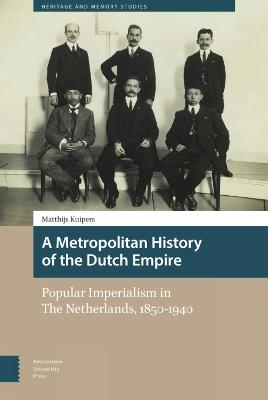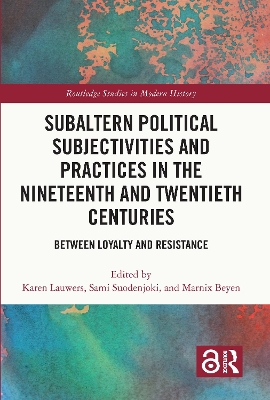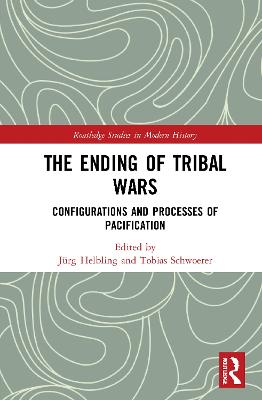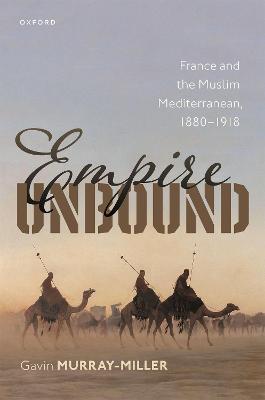Metropolitan History of the Dutch Empire
 portes grátis
portes grátis
Metropolitan History of the Dutch Empire
Popular Imperialism in The Netherlands, 1850-1940
Kuipers, Matthijs
Amsterdam University Press
02/2022
232
Dura
Inglês
9789463729918
15 a 20 dias
Descrição não disponível.
List of Abbreviations
On Names and Terminology
Introduction: The Still Waters of Empire Run Deep
Dutch Indifference
The Metropole in the Colonial World
Conquering the Metropolitan Mind
The Politics of History
Case Studies from a Fragmented Empire
1 Food and Indifference: A Cultural History of the Rijsttafel in the Netherlands
Dichotomies of a Colonial Dish
The Metropolitan Rijsttafel
Who's Cooking?
The Politics of Colonial Food
The Limits of Permeation (Conclusion)
2 Indonesians and Cultural Citizenship: The Metropolitan Microcosm of Empire
Dissent and Cultural Citizenship
Wim Tehupeiory: Naturalization and Social Mobility
Tjipto Mangoenkoesoemo: Political Dissent in the Metropole
Jodjana: The Arts and the Idea of Association
Imperial Citizenship and Double Consciousness (Conclusion)
3 Schools and Propaganda: History Books and Schools as Sites of Imperial Campaigns
Schools, Teachers and Pupils
History Lessons
'Classroom Collections'
Maps on the Wall (Conclusion)
4 Scouting and the Racialized Other: Imperial Tropes in the Dutch Scouting Movement
The Advent of Dutch Scouting
An Empire without Boys
Imperial Imagery in Dutch Scouting
The 1937 Jamboree
Scouting and Dutch Imperialism (Conclusion)
5 Missionary Organizations and the Metropolitan Public: The 'Inner Mission' and the Invention of Mission Festivals
Internal Colonialism
Mission Festivals
The Choice of a Missionary Career
Gendered Role Models
Finding Funds (Conclusion)
Conclusion: A Fragmented Empire
Sources
Archives and Libraries
Published Primary Sources
Published Secondary Sources
Index
List of Figures and Tables
Figures
Figure 1 A modern-day Javanese tumpeng
Figure 2 Mrs. Catenius-van der Meijden
Figure 3 A rijsttafel in a colonial domestic setting
Figure 4 Drawing of Oost en West's coat of arms
Figure 5 Boeatan's tearoom
Figure 6 Portrait of the Indiers Comite
Figure 7 Jodjana performing in Germany
Figure 8 Poster announcing the 1937 World Scout Jamboree in Vogelenzang, Netherlands
Tables
Table 1 Annual number of classroom collections sent out by the Koloniaal Museum and the reported number requested by schools
Table 2 Number of annual visitors to the Koloniaal Museum
Table 3 Annual balance of the Nederlandsch Zendelinggenootschap in the 1880s
On Names and Terminology
Introduction: The Still Waters of Empire Run Deep
Dutch Indifference
The Metropole in the Colonial World
Conquering the Metropolitan Mind
The Politics of History
Case Studies from a Fragmented Empire
1 Food and Indifference: A Cultural History of the Rijsttafel in the Netherlands
Dichotomies of a Colonial Dish
The Metropolitan Rijsttafel
Who's Cooking?
The Politics of Colonial Food
The Limits of Permeation (Conclusion)
2 Indonesians and Cultural Citizenship: The Metropolitan Microcosm of Empire
Dissent and Cultural Citizenship
Wim Tehupeiory: Naturalization and Social Mobility
Tjipto Mangoenkoesoemo: Political Dissent in the Metropole
Jodjana: The Arts and the Idea of Association
Imperial Citizenship and Double Consciousness (Conclusion)
3 Schools and Propaganda: History Books and Schools as Sites of Imperial Campaigns
Schools, Teachers and Pupils
History Lessons
'Classroom Collections'
Maps on the Wall (Conclusion)
4 Scouting and the Racialized Other: Imperial Tropes in the Dutch Scouting Movement
The Advent of Dutch Scouting
An Empire without Boys
Imperial Imagery in Dutch Scouting
The 1937 Jamboree
Scouting and Dutch Imperialism (Conclusion)
5 Missionary Organizations and the Metropolitan Public: The 'Inner Mission' and the Invention of Mission Festivals
Internal Colonialism
Mission Festivals
The Choice of a Missionary Career
Gendered Role Models
Finding Funds (Conclusion)
Conclusion: A Fragmented Empire
Sources
Archives and Libraries
Published Primary Sources
Published Secondary Sources
Index
List of Figures and Tables
Figures
Figure 1 A modern-day Javanese tumpeng
Figure 2 Mrs. Catenius-van der Meijden
Figure 3 A rijsttafel in a colonial domestic setting
Figure 4 Drawing of Oost en West's coat of arms
Figure 5 Boeatan's tearoom
Figure 6 Portrait of the Indiers Comite
Figure 7 Jodjana performing in Germany
Figure 8 Poster announcing the 1937 World Scout Jamboree in Vogelenzang, Netherlands
Tables
Table 1 Annual number of classroom collections sent out by the Koloniaal Museum and the reported number requested by schools
Table 2 Number of annual visitors to the Koloniaal Museum
Table 3 Annual balance of the Nederlandsch Zendelinggenootschap in the 1880s
Este título pertence ao(s) assunto(s) indicados(s). Para ver outros títulos clique no assunto desejado.
Imperialism, Colonialism, Popular Culture
List of Abbreviations
On Names and Terminology
Introduction: The Still Waters of Empire Run Deep
Dutch Indifference
The Metropole in the Colonial World
Conquering the Metropolitan Mind
The Politics of History
Case Studies from a Fragmented Empire
1 Food and Indifference: A Cultural History of the Rijsttafel in the Netherlands
Dichotomies of a Colonial Dish
The Metropolitan Rijsttafel
Who's Cooking?
The Politics of Colonial Food
The Limits of Permeation (Conclusion)
2 Indonesians and Cultural Citizenship: The Metropolitan Microcosm of Empire
Dissent and Cultural Citizenship
Wim Tehupeiory: Naturalization and Social Mobility
Tjipto Mangoenkoesoemo: Political Dissent in the Metropole
Jodjana: The Arts and the Idea of Association
Imperial Citizenship and Double Consciousness (Conclusion)
3 Schools and Propaganda: History Books and Schools as Sites of Imperial Campaigns
Schools, Teachers and Pupils
History Lessons
'Classroom Collections'
Maps on the Wall (Conclusion)
4 Scouting and the Racialized Other: Imperial Tropes in the Dutch Scouting Movement
The Advent of Dutch Scouting
An Empire without Boys
Imperial Imagery in Dutch Scouting
The 1937 Jamboree
Scouting and Dutch Imperialism (Conclusion)
5 Missionary Organizations and the Metropolitan Public: The 'Inner Mission' and the Invention of Mission Festivals
Internal Colonialism
Mission Festivals
The Choice of a Missionary Career
Gendered Role Models
Finding Funds (Conclusion)
Conclusion: A Fragmented Empire
Sources
Archives and Libraries
Published Primary Sources
Published Secondary Sources
Index
List of Figures and Tables
Figures
Figure 1 A modern-day Javanese tumpeng
Figure 2 Mrs. Catenius-van der Meijden
Figure 3 A rijsttafel in a colonial domestic setting
Figure 4 Drawing of Oost en West's coat of arms
Figure 5 Boeatan's tearoom
Figure 6 Portrait of the Indiers Comite
Figure 7 Jodjana performing in Germany
Figure 8 Poster announcing the 1937 World Scout Jamboree in Vogelenzang, Netherlands
Tables
Table 1 Annual number of classroom collections sent out by the Koloniaal Museum and the reported number requested by schools
Table 2 Number of annual visitors to the Koloniaal Museum
Table 3 Annual balance of the Nederlandsch Zendelinggenootschap in the 1880s
On Names and Terminology
Introduction: The Still Waters of Empire Run Deep
Dutch Indifference
The Metropole in the Colonial World
Conquering the Metropolitan Mind
The Politics of History
Case Studies from a Fragmented Empire
1 Food and Indifference: A Cultural History of the Rijsttafel in the Netherlands
Dichotomies of a Colonial Dish
The Metropolitan Rijsttafel
Who's Cooking?
The Politics of Colonial Food
The Limits of Permeation (Conclusion)
2 Indonesians and Cultural Citizenship: The Metropolitan Microcosm of Empire
Dissent and Cultural Citizenship
Wim Tehupeiory: Naturalization and Social Mobility
Tjipto Mangoenkoesoemo: Political Dissent in the Metropole
Jodjana: The Arts and the Idea of Association
Imperial Citizenship and Double Consciousness (Conclusion)
3 Schools and Propaganda: History Books and Schools as Sites of Imperial Campaigns
Schools, Teachers and Pupils
History Lessons
'Classroom Collections'
Maps on the Wall (Conclusion)
4 Scouting and the Racialized Other: Imperial Tropes in the Dutch Scouting Movement
The Advent of Dutch Scouting
An Empire without Boys
Imperial Imagery in Dutch Scouting
The 1937 Jamboree
Scouting and Dutch Imperialism (Conclusion)
5 Missionary Organizations and the Metropolitan Public: The 'Inner Mission' and the Invention of Mission Festivals
Internal Colonialism
Mission Festivals
The Choice of a Missionary Career
Gendered Role Models
Finding Funds (Conclusion)
Conclusion: A Fragmented Empire
Sources
Archives and Libraries
Published Primary Sources
Published Secondary Sources
Index
List of Figures and Tables
Figures
Figure 1 A modern-day Javanese tumpeng
Figure 2 Mrs. Catenius-van der Meijden
Figure 3 A rijsttafel in a colonial domestic setting
Figure 4 Drawing of Oost en West's coat of arms
Figure 5 Boeatan's tearoom
Figure 6 Portrait of the Indiers Comite
Figure 7 Jodjana performing in Germany
Figure 8 Poster announcing the 1937 World Scout Jamboree in Vogelenzang, Netherlands
Tables
Table 1 Annual number of classroom collections sent out by the Koloniaal Museum and the reported number requested by schools
Table 2 Number of annual visitors to the Koloniaal Museum
Table 3 Annual balance of the Nederlandsch Zendelinggenootschap in the 1880s
Este título pertence ao(s) assunto(s) indicados(s). Para ver outros títulos clique no assunto desejado.







